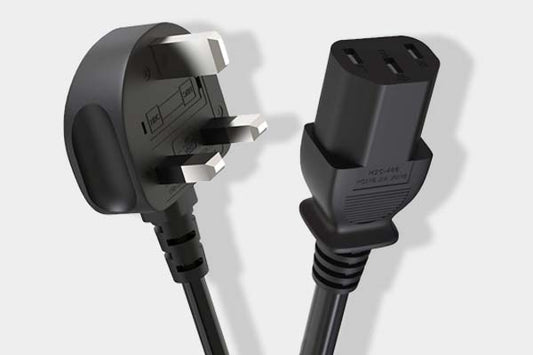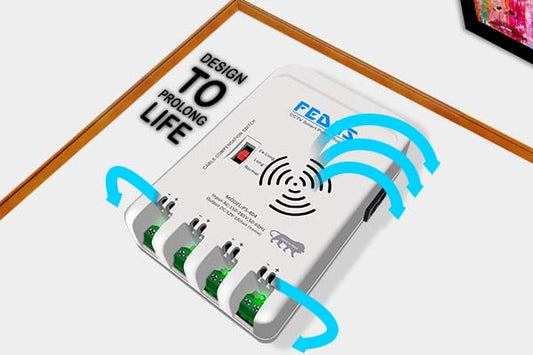Category5 Cables: Developing Strong Business Networks
Introduction:
The Cat5 cable has been crucial for building strong business networks in the rapidly changing digital and connectivity environment. Though newer cabling standards, including Cat6 and Cat7, have been developed, Cat5 cables remain crucial in many applications because of their cost-effectiveness, reliability, and capacity for maintaining network systems. This blog reviews the historical, current, and future elements of Cat5 cables, explaining their continued importance and potential for supporting business networks in the future.
Cat5 Cables Overviews
The development of Cat5 cables in the early 1990s rapidly confirmed them as a fundamental component of Ethernet networks. These twisted-pair cables were explicitly engineered to effectively transfer voice, data, and video information over extended distances while reducing interference. The maximum data transfer rate for conventional Cat5 cables is 100 Mbps. However, the more powerful variant, Cat5e (Category 5 Enhanced), can support speeds as high as 1 Gbps (Gigabit Ethernet).
The efficacy of Cat5 and Cat5e cables can be linked to their equilibrium between cost-efficiency and performance, particularly for small to medium-sized enterprises that need dependable networking solutions without the necessity for extremely high speeds.
Analysis of Cat5 Cables:
A Cat5 cable includes four copper wires covered in a protective outer covering. Wire twisting minimises noise and electromagnetic interference (EMI), giving them a very efficient option for data transfer. Cat5 cables use RJ45 connectors, a widely used standard in networking devices that include routers, switches, and modems. The inherent structure and design of Cat5 cables render them highly adaptable, facilitating a wide range of applications, including:
- Connectivity with Ethernet
- Transmission of video
- Voice over Internet Protocol (VoIP) telephony
- Closed-circuit television (CCTV) security
Cat5 Cables in Business Networks:
Along with the advent of advanced cable types, Cat5 cables remain the essential foundation for many corporate networks, especially for smaller companies where rapid data transfer is not a major need. Within a standard office environment, where employees participate in email communication, file access, and cloud service usage, Cat5 cables provide ample capacity to manage these activities effectively.
Also, Cat5 cables are compatible with the Power over Ethernet (PoE) standard, allowing devices that include IP cameras, wireless access points, and VoIP phones to obtain power and data over a single cable. Furthermore, this prevents the necessity for extra power sources, reducing infrastructure expenses and simplifying installations for enterprises.
Why Cat5 Cables are still Relevant:
While newer cable types, including Cat6, Cat6a, and Cat7, provide higher speeds and improved shielding, Cat5 cables include several unique features that make them an attractive choice for various businesses:
Cat5 cables are notably cheaper than their successors, making them well-suited for enterprises seeking dependable connectivity without high speeds.
Cat5 cables are simple to install, maintain, and repair. This simplicity benefits business enterprises without complex network requirements.
Some networking equipment, especially older hardware, are specifically engineered to be compatible with Cat5 systems. Updates to more recent cables can require further investments in equipment.
Cat5 cables offer ample speed and bandwidth to facilitate fundamental office activities such as online browsing, emailing, and file sharing.
The Future of Use of cat5 Cables: A Balanced Approach
Business enterprises are quickly incorporating more rapid and advanced technology as the digital environment evolves. Nevertheless, Cat5 cables will continue to have a role in upcoming corporate networks, basically under the following situations:
Many enterprises, particularly those with well-established networks, still depend on Cat5 connections. A complete network infrastructure upgrade can incur significant costs and require a substantial investment of effort. Since these outdated systems operate effectively, Cat5 cables will continue to be used.
Startups and small-scale enterprises frequently operate with little financial resources. Therefore, it may not be necessary for them to invest in high-speed cable during the early stages. Category 5 cables provide a dependable and economical alternative for these organisations.
Cat5 cables are highly suitable for meeting the needs of residential users and low-intensity business operations that do not require extensive data transfer.
Despite the growing use of Cat6 and Cat7 cables in high-performance systems, Cat5 cables have the potential to be utilised in less data-intensive IoT (Internet of Things) and edge computing applications. Technologies that include intelligent lighting systems, environmental sensors, and smart locks do not need the increased bandwidth offered by premium connections, allowing Cat5 to continue being a cost-efficient choice for these systems.
The Challenges Ahead for Cat5 Cables:
Although Cat5 cables have significant benefits, they still have unique limitations, especially as more and more enterprises require quicker and more secure network solutions:
Companies dealing with substantial amounts of data, streaming high-quality video, or operating complex software are beginning to see the limitations of the 100 Mbps to 1 Gbps range of Cat5 and Cat5e connections.
With the growing use of advanced technologies like 4K streaming, VR/AR (Virtual Reality/Augmented Reality), and AI (Artificial Intelligence), the speed provided by Cat5 cables may become sufficient to satisfy these expanding requirements.
Cat5 cables can experience signal decreases in an environment characterised by strong electrical interference or extended cable runs. Specially developed cables with improved shielding provide superior performance in such circumstances.
The Transition to Higher Speed Networks:
As companies grow and expand, many utilise Cat6 and Cat6a cables to provide faster data transmission, reduce interaction, and improve performance at extended distances. Nevertheless, this shift is not usually immediate or required for every organisation. For individuals operating in sectors where high-speed networking is not of the highest priority, Cat5 cables remain an attractive choice.
Conclusion:
Cat5 cables' future may not be as attractive as their more modern counterparts, but it remains the future. Cat5 cables are reliable for constructing powerful networks in simpler environments for enterprises that value cost-efficiency and practicality. Cat5 will surely remain relevant as technology grows, providing an economical choice for basic networking, supporting legacy systems, and helping low-data IoT applications.
Though the digital world is evolving swiftly and many businesses need higher-speed cables, Cat5 cables' adaptability, cost-efficiency, and simplicity ensure they will continue to build effective business networks today and in the future. Cat5 cables are vital for modern networking design, whether in a small business or a legacy network.
Writer - Vishal Singh


























